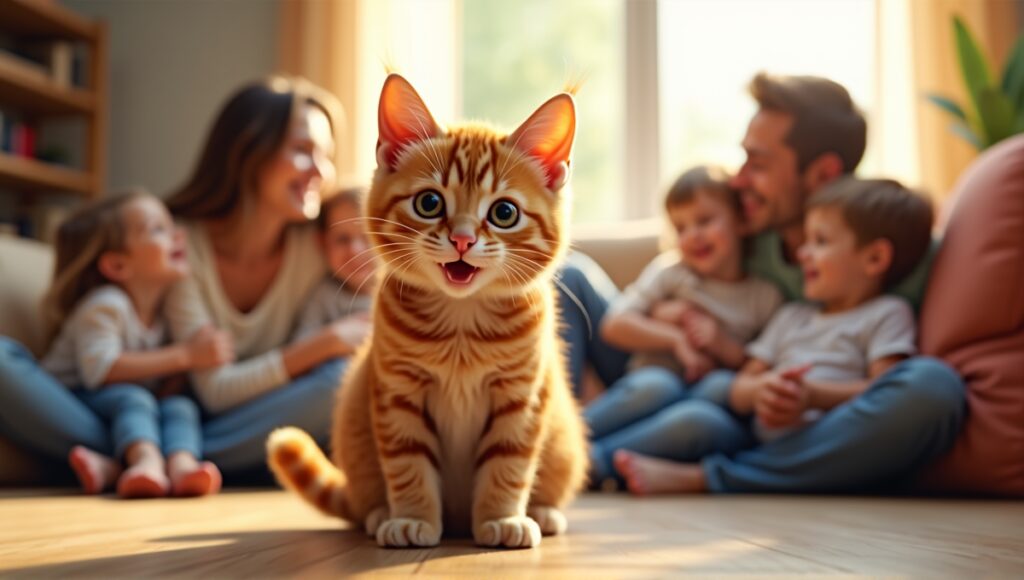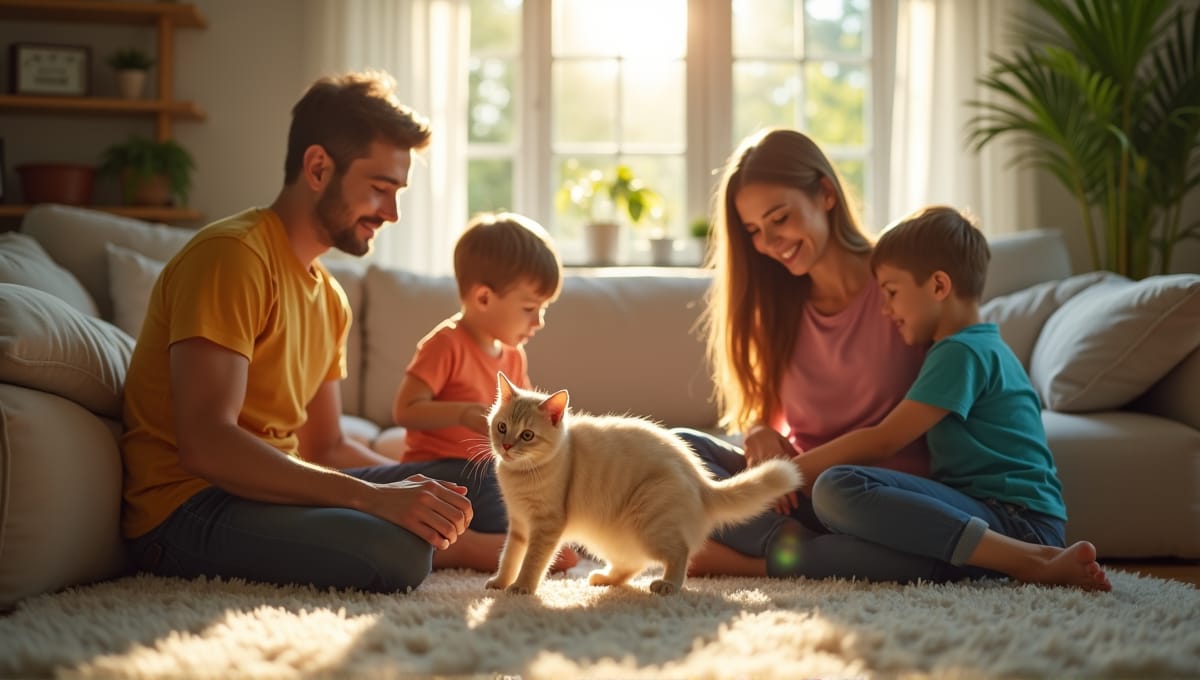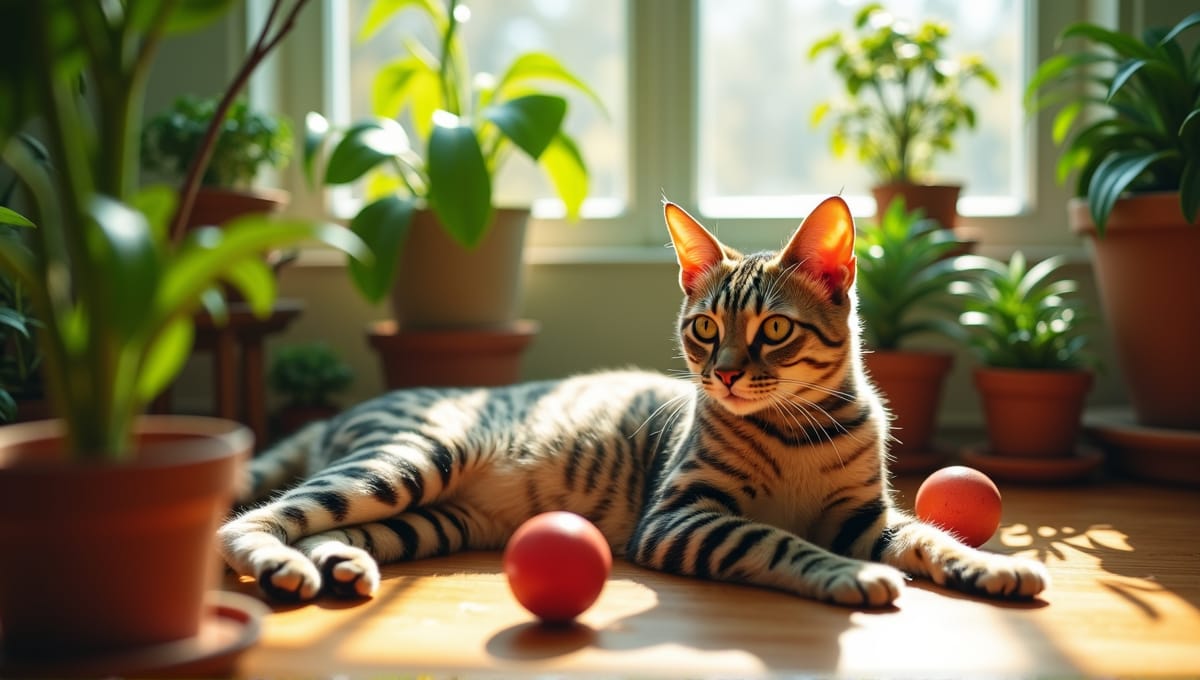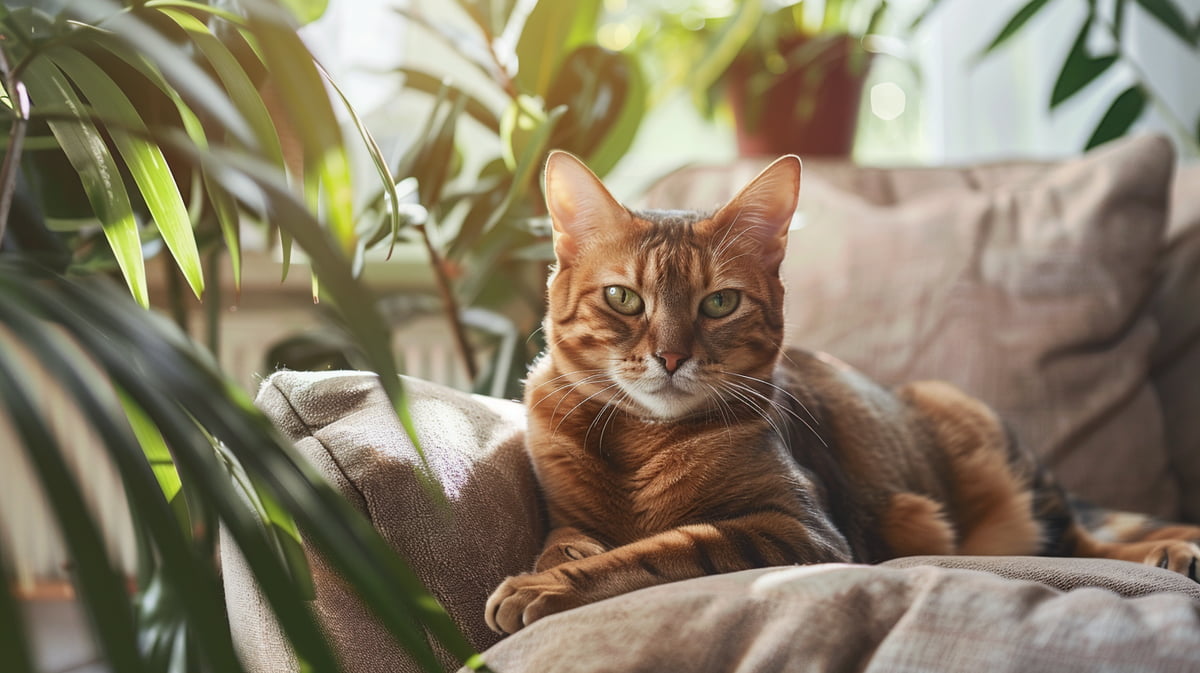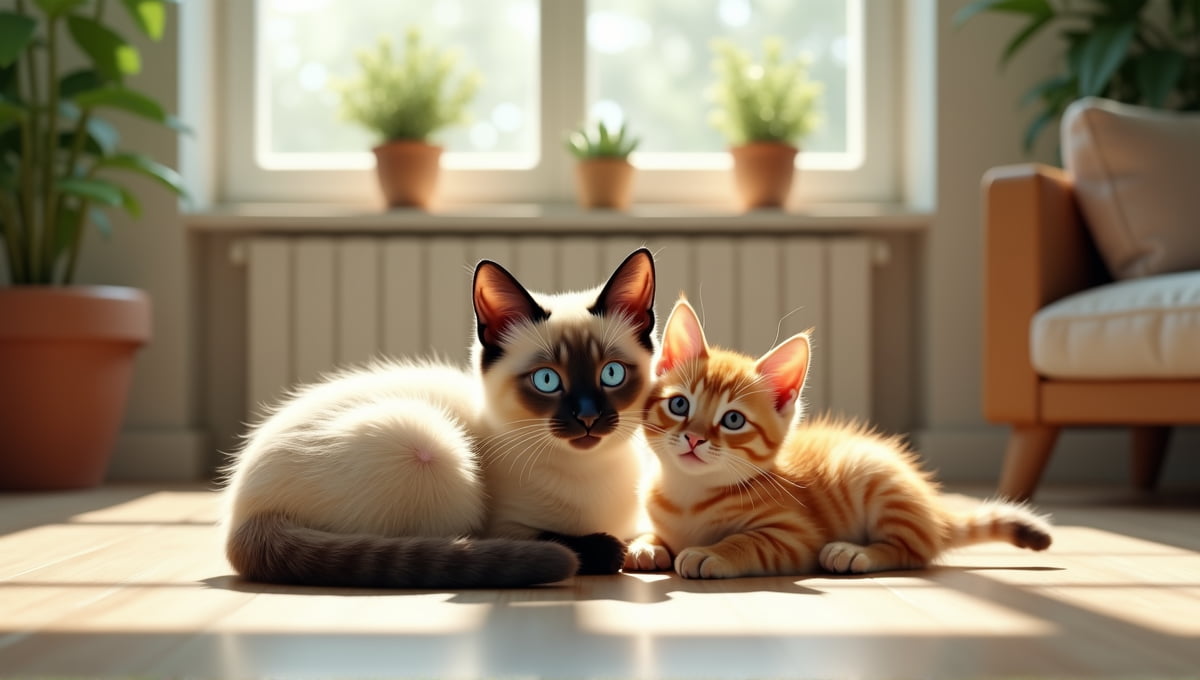Munchkin cats are adorable, short-legged cats with a lot of spunk. I’ve cared for them while volunteering at the shelter, and they are truly one of a kind. However, because of their unusual appearance, people often ask me if Munchkin cats make good family pets.
So if you’re considering a Munchkin cat, you may be wondering if this breed is the right choice for your home. Let’s discuss the breed’s characteristics to help you make that decision.
What is a Munchkin Cat?
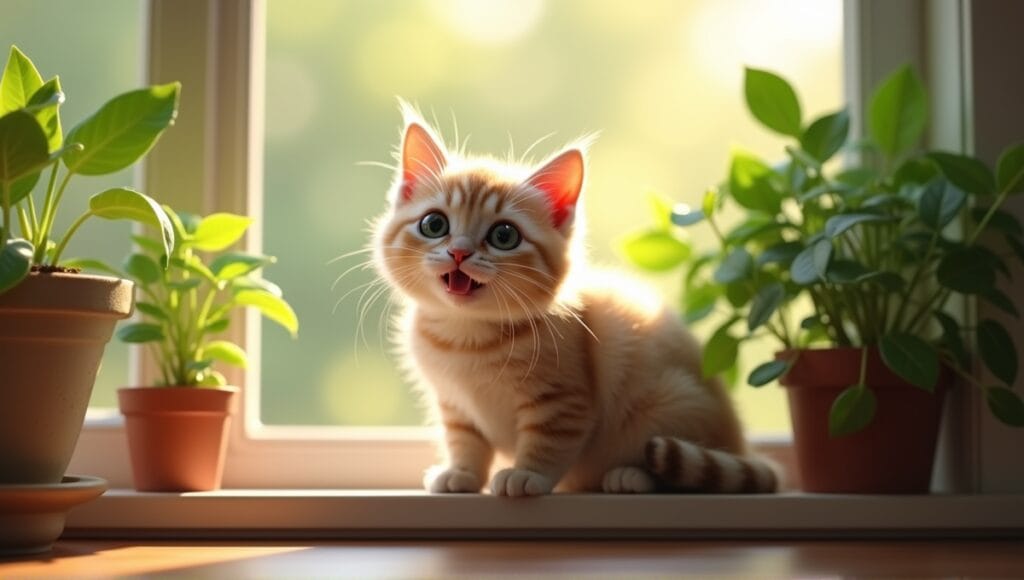
Munchkin cats are a small breed best known for their short legs. These cats have normal-sized bodies with short legs, thanks to a genetic mutation that originated in Louisiana in the 1980s. This mutation quickly captured the interest of cat lovers and breeders.
The breed achieved recognition as a breed by The International Cat Association (TICA) in 1994. However, other associations have been slower to accept Munchkin cats due to concerns about potential health problems. Munchkin cats’ legs are short due to a dominant gene. If two Munchkin cats breed, they can produce kittens with normal leg length.
The genetic properties of Munchkin cats are as follows:
- Autosomal dominant gene for short legs
- Heterozygous cats (those with one short legs gene) can survive
- Homozygous embryos (those with two short legs genes) cannot survive
- The gene doesn’t impact any other body attributes
I’ve seen many Munchkins come through the doors during my time working at a pet store. While their distinct appearance usually attracts people to them, it’s their personality that keeps people coming back.
Distinctive Features of Short-Legged Felines
Munchkin cats have a genetic mutation that causes their short legs. This mutation impacts the long bones in their legs, essentially making them short compared to other cats. Despite their lack of height, Munchkins have normal body proportions.
Adult Munchkin cats typically average about 7 to 9 inches in height as measured at the shoulders. They weigh anywhere from 5 to 9 pounds, and males are generally larger than females. Munchkins have a medium body size with a rounded chest and a slight indentation in the spine. Their heads are medium in size and wedge shaped with large, wide-set eyes.
Munchkin cats come in a wide variety of coat colors and patterns, including solid colors, tabby, calico, and more. They can also have a short, medium, or long coat, and the coat is typically plush and soft. Some Munchkins also have what’s known as a “frill,” which is a distinct ring of fur around their neck, giving them a lion-like appearance.
In my opinion, the Munchkin’s unique body doesn’t impact their ability to be agile at all. While they do move differently than other cats, they’re still very agile and can jump and play just like any other cat. Some cat enthusiasts even compare their agility to that of the Japanese Bobtail, another breed known for its unique physical characteristics and playful nature.
Short-Legged Feline Personality and Temperament
Munchkin cats are loved for their friendly, outgoing nature. They are commonly described as sociable and playful. They usually enjoy spending time with their human family members and are not timid around strangers. In my experience, they are excellent with children and other animals if socialized from a young age.
Munchkin cats are very active and inquisitive. Their short legs do little to slow them down. They like to explore their environment and you’ll often see them running and playing. They are masterful at maneuvering furniture and may even stand on their back legs to get a better view.
They are also intelligent. You can train them to do tricks, and they often enjoy puzzle toys that challenge their brain. Many owners report that their Munchkin cat learned tricks in no time and responds well to training. This makes them an ideal, fun companion for a family that wants a cat who will engage in interactive play.
Despite their energy level, Munchkin cats also appreciate quiet time. They are also often happy sitting in their owner’s lap. They find a lot of play time and affection and are therefore a great fit for a variety of family dynamics. In terms of intelligence and trainability, Munchkins are often compared to other smart breeds like the Oriental Shorthair.
Health Considerations for Munchkin Cats
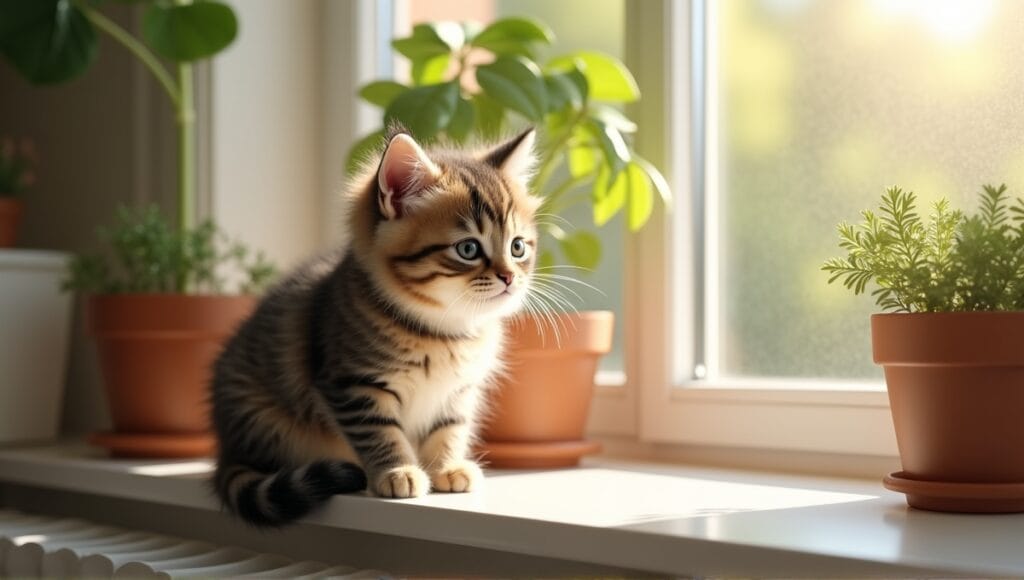
Munchkin cats tend to live for 12 to 15 years, and they are generally healthy overall. However, like any purebred cat, there are a few health issues to be aware of.
Common genetic health issues in Munchkin cats include:
- Lordosis
- Pectus excavatum
- Osteoarthritis in old age
Many people worry that Munchkin cats will have spinal problems due to their short legs. However, studies have shown that Munchkin cats are not at higher risk for spinal issues compared to other breeds of cats. Munchkin cats can run, jump, and play just like any other cat, and their mobility is not significantly limited due to their short legs.
Regular vet check-ups are important for Munchkin cats, as they are for any breed of cat. Annual check-ups can help catch any health issues early. As your Munchkin cat ages, your vet may also recommend specific health screenings. Keeping your Munchkin cat at a healthy weight is also important to prevent any joint issues.
In my years of working with cats, I have seen many healthy, active Munchkin cats. With proper care, Munchkin cats can live just as long as any other breed of cat.
Caring for a Munchkin Cat
Munchkin cats have the same grooming requirements as any other breed. Short-haired Munchkins only need to be brushed once or twice a week, while long-haired Munchkins require more frequent grooming to avoid matting. You should also trim their nails regularly and take care of their dental needs.
Feeding Munchkins a balanced diet is essential. Ensure they eat high-quality cat food that fulfills their nutritional requirements. Some people prefer a combination of wet and dry food. Always keep fresh water available, and be mindful of your cat’s food intake to prevent it from becoming overweight.
Munchkins are a playful cat breed that requires regular exercise. You can keep them mentally and physically engaged with interactive toys, puzzle feeders, and climbing structures. Despite their shorter legs, Munchkins still enjoy climbing and perching, so consider providing cat trees or shelves for them.
To keep Munchkins mentally stimulated, rotate toys and provide new ones. You can also create hiding places and a cozy space for them to explore. Additionally, consider installing a window perch to keep them entertained as they look outside. Doing these things will prevent it from becoming bored and promote its overall health.
Munchkin Cat Varieties
Munchkin cats can have both short-haired and long-haired coats. The short-haired Munchkin has a teddy bear like short coat that is easy to care for. Long-haired Munchkins, also known as Munchkin Longhair, have a medium length silky coat that is more high maintenance.
Munchkin cats are represented by three different leg lengths. Munchkins considered “standard” have short legs, while “super-short” Munchkins have slightly shorter legs. The shortest leg variation of all is called a “rug hugger” Munchkin, and you’ll even see all three variations in one litter.
Munchkin cats sport a variety of colors and patterns. You can find everything from a Munchkin in solid black to white or cream. They also come in tabby patterns and calico and tortoiseshell patterns are quite common. Certain Munchkins may also sport point coloration, much like a Siamese cat.
Some of the more unique variations of Munchkin cats include the Minskin, a cross between a Munchkin and a Sphynx, and the Bambino, a hairless Munchkin and Sphynx mix with short legs. These variations showcase the diversity within the Munchkin breed, similar to how Chinese cat breeds exhibit a wide range of characteristics.
Bringing Home a Short-Legged Feline Friend
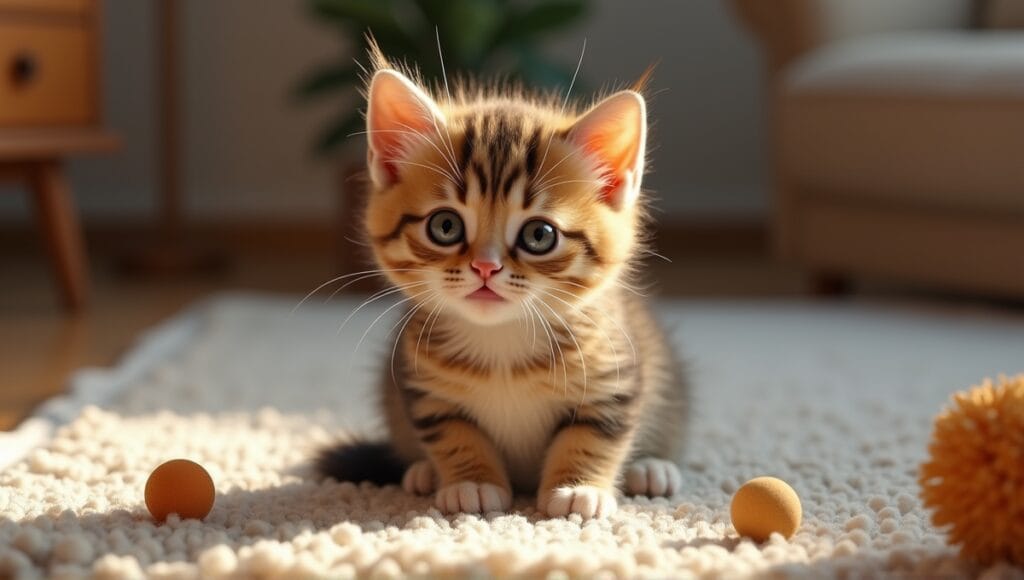
Finding Munchkin cats for adoption is difficult, as they are not often found in animal shelters. Your best bet is to look for breed-specific rescues. Alternatively, you can purchase a Munchkin from a reputable breeder. Munchkin kittens typically cost between $1,000 and $2,000 from a quality breeder, depending on the pedigree and quality of the cat.
When selecting a Munchkin cat, ask the breeder or rescue organization about the cat’s health history. Also, ask if they have conducted any genetic testing on the cat. Take a look around the living environment, and ask questions about the cat’s socialization. A good breeder or rescue organization will be transparent with you and won’t hesitate to answer any questions you have.
Preparing your home for a Munchkin involves making it a safe, enriching environment. Offer strong scratching posts and climbing opportunities. Don’t leave out any small items the cat could swallow. Additionally, set up plenty of comfortable napping and hiding spots. Also, remember Munchkin cats are good jumpers and climbers, so don’t leave out anything fragile.
In my experience, Munchkin cats are adaptable to most homes. These cats are social and enjoy company. Be ready to give a Munchkin a lot of attention and playtime. With proper care and affection, Munchkins can make a great addition to your family. If you’re considering other breeds as well, you might want to look into exotic cat breeds to compare their characteristics with those of the Munchkin.
Wrapping Up
Munchkin cats are an adorable and lovable breed. Their stubby legs and active nature set them apart from other cats. I’ve witnessed the happiness these cats can bring to a home. You’re now an expert on Munchkin cats’ characteristics, health, and care. Just remember that responsible ownership is the most important thing. With the right care and love, your Munchkin cat will be a wonderful friend for years.


